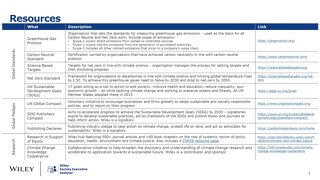the-new-normal-and-research-publishing
December 09, 2020
The idea that publishers should center the needs of researchers, first and foremost, isn’t new. At Wiley, we believe that when we’re focused on helping researchers share their best work with more people, everyone benefits. But the “new normal” of 2020 has shown that there are still plenty of ways to make publishing work better, for everyone, and not just for researchers.
A world of change
The scholarly publishing community was already in the middle of significant change before the rapid impacts of the coronavirus pandemic.
Now, institutional budgets are even tighter than they were before. Funder mandates for research to be published open access are developing and expanding, speeding up the transition from subscription-based to alternative business models where the article, rather than the journal, is the focus.
What’s more, if finding peer reviewers was difficult before the pandemic, it’s only getting harder! For many editors, already stretched by balancing their editorial role with the rest of their responsibilities, the amount of time it takes to review content and journal administrative tasks just isn’t sustainable.
And, while we’ve made great progress in harnessing the power of technology in publishing, some manual processes still take more time and attention than they should. That means less time to focus on the scholarly and scientific integrity of the content itself.
These challenges aren’t new. But the rapid changes we all experienced in 2020 put a new spotlight on the importance of meeting researchers’ needs and having the ability to adapt more quickly. Because it’s likely that we’ll continue to experience unexpected change—maybe not on the scale of 2020, but still significant—into 2021 and beyond. So, what can publishers do to be more resilient now and for the future?
Making publishing work better, for everyone
The good news is that because these challenges aren’t new, we’re already working to solve for them. And as the pressures on the research publishing ecosystem increase, we’re ramping up our ability to free up time for authors to focus on doing their research, for editors and reviewers to develop the quality of the content, and for societies to advance the discipline as a whole.
Here are just a few examples:
1. Simplifying the submission process.
If there’s one thing that authors say they want to change about the publishing experience, it’s making submission easier. So, last year we launched Free Format submission, offering researchers the flexibility to submit their papers in the format that they prefer.
With our new submission platform, Research Exchange, we’ve taken simpler submission one step further: Instead of copying and pasting information, authors simply upload their files, and the system auto-populates key fields for the author to verify.
Easier, simpler submission makes authors happier, and it’s also good for the journal–complicated submission requirements could be turning away high-quality research if authors see that a competing journal has a simpler experience.
2. Helping more papers find the right journal.
A growing number of publishing transfer networks help authors find the right home for their work, and since reviews travel with the paper, networks also save time for peer reviewers. Our Transfer Desk Assistant tool is another powerful way to reduce the amount of time it takes authors to find the right journal for their paper.
3. Publishing high-quality research, more quickly.
Long publication timelines are frustrating for authors, bad for the journal’s reputation, and bad for research. Leaner production workflows that streamline proofing by as much as two weeks, or peer review support through our growing in-house team of content review experts, are just a few of the ways we’re helping our partners ensure both the integrity of published research and competitive publication times.
4. Designing for adaptability and resilience. Leaner workflows reduce the time it takes for authors to see their paper published, but they’re also more resilient to disruption. To take full advantage of innovations as they’re available—like new enhanced workflows and content enrichment—start by adopting a more contemporary journal layout style. Because it’s both flexible and resilient, using our contemporary journal design helps to ensure that whatever unexpected operational challenges the future might bring, publishing critical research through the journal can continue.
These are just a few of the ways that we’re investing, along with our society partners, in the present and the future of publishing. By creating smarter tools and simplifying processes, we can free up the time of the content experts to be experts, help more research find the right home, and grow the world’s body of knowledge. And when that happens, everybody benefits.
If you’re interested in learning more about which initiatives your journals could still benefit from, please contact your Wiley Journal Publishing Manager.










